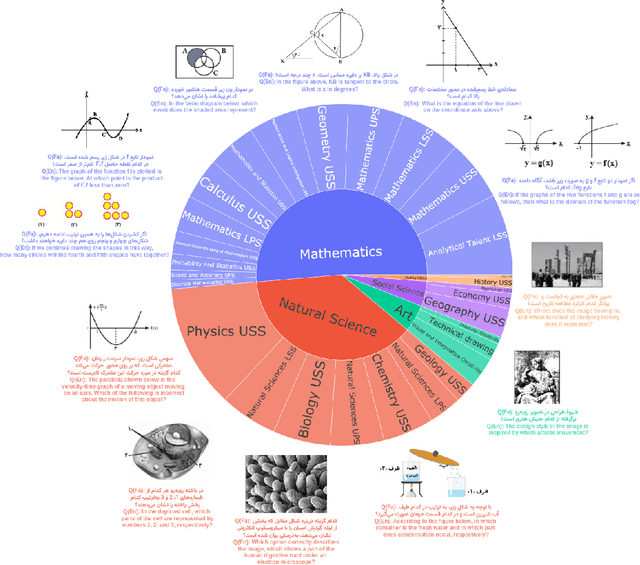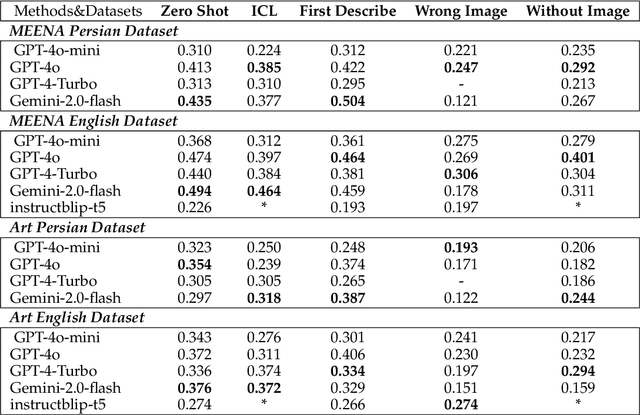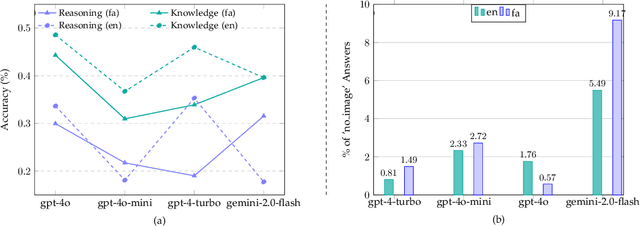Topic Modeling
Topic modeling is a type of statistical modeling for discovering the abstract topics that occur in a collection of documents.
Papers and Code
Federal Reserve Communication and the COVID-19 Pandemic
Aug 06, 2025In this study, we examine the Federal Reserve's communication strategies during the COVID-19 pandemic, comparing them with communication during previous periods of economic stress. Using specialized dictionaries tailored to COVID-19, unconventional monetary policy (UMP), and financial stability, combined with sentiment analysis and topic modeling techniques, we identify a distinct focus in Fed communication during the pandemic on financial stability, market volatility, social welfare, and UMP, characterized by notable contextual uncertainty. Through comparative analysis, we juxtapose the Fed's communication during the COVID-19 crisis with its responses during the dot-com and global financial crises, examining content, sentiment, and timing dimensions. Our findings reveal that Fed communication and policy actions were more reactive to the COVID-19 crisis than to previous crises. Additionally, declining sentiment related to financial stability in interest rate announcements and minutes anticipated subsequent accommodative monetary policy decisions. We further document that communicating about UMP has become the "new normal" for the Fed's Federal Open Market Committee meeting minutes and Chairman's speeches since the Global Financial Crisis, reflecting an institutional adaptation in communication strategy following periods of economic distress. These findings contribute to our understanding of how central bank communication evolves during crises and how communication strategies adapt to exceptional economic circumstances.
Combining Language and Topic Models for Hierarchical Text Classification
Jul 22, 2025Hierarchical text classification (HTC) is a natural language processing task which has the objective of categorising text documents into a set of classes from a predefined structured class hierarchy. Recent HTC approaches use various techniques to incorporate the hierarchical class structure information with the natural language understanding capabilities of pre-trained language models (PLMs) to improve classification performance. Furthermore, using topic models along with PLMs to extract features from text documents has been shown to be an effective approach for multi-label text classification tasks. The rationale behind the combination of these feature extractor models is that the PLM captures the finer-grained contextual and semantic information while the topic model obtains high-level representations which consider the corpus of documents as a whole. In this paper, we use a HTC approach which uses a PLM and a topic model to extract features from text documents which are used to train a classification model. Our objective is to determine whether the combination of the features extracted from the two models is beneficial to HTC performance in general. In our approach, the extracted features are passed through separate convolutional layers whose outputs are combined and passed to a label-wise attention mechanisms which obtains label-specific document representations by weighing the most important features for each class separately. We perform comprehensive experiments on three HTC benchmark datasets and show that using the features extracted from the topic model generally decreases classification performance compared to only using the features obtained by the PLM. In contrast to previous work, this shows that the incorporation of features extracted from topic models for text classification tasks should not be assumed beneficial.
Beyond the Black Box: Integrating Lexical and Semantic Methods in Quantitative Discourse Analysis with BERTopic
Aug 26, 2025Quantitative Discourse Analysis has seen growing adoption with the rise of Large Language Models and computational tools. However, reliance on black box software such as MAXQDA and NVivo risks undermining methodological transparency and alignment with research goals. This paper presents a hybrid, transparent framework for QDA that combines lexical and semantic methods to enable triangulation, reproducibility, and interpretability. Drawing from a case study in historical political discourse, we demonstrate how custom Python pipelines using NLTK, spaCy, and Sentence Transformers allow fine-grained control over preprocessing, lemmatisation, and embedding generation. We further detail our iterative BERTopic modelling process, incorporating UMAP dimensionality reduction, HDBSCAN clustering, and c-TF-IDF keyword extraction, optimised through parameter tuning and multiple runs to enhance topic coherence and coverage. By juxtaposing precise lexical searches with context-aware semantic clustering, we argue for a multi-layered approach that mitigates the limitations of either method in isolation. Our workflow underscores the importance of code-level transparency, researcher agency, and methodological triangulation in computational discourse studies. Code and supplementary materials are available via GitHub.
Automatic Question & Answer Generation Using Generative Large Language Model (LLM)
Aug 26, 2025\Abstract{In the realm of education, student evaluation holds equal significance as imparting knowledge. To be evaluated, students usually need to go through text-based academic assessment methods. Instructors need to make diverse sets of questions that need to be fair for all students to prove their adequacy over a particular topic. This can prove to be quite challenging as they may need to manually go through several different lecture materials. Our objective is to make this whole process much easier by implementing Automatic Question Answer Generation /(AQAG), using fine-tuned generative LLM. For tailoring the instructor's preferred question style (MCQ, conceptual, or factual questions), prompt Engineering (PE) is being utilized. In this research, we propose to leverage unsupervised learning methods in NLP, primarily focusing on the English language. This approach empowers the base Meta-Llama 2-7B model to integrate RACE dataset as training data for the fine-tuning process. Creating a customized model that will offer efficient solutions for educators, instructors, and individuals engaged in text-based evaluations. A reliable and efficient tool for generating questions and answers can free up valuable time and resources, thus streamlining their evaluation processes.}
S2WTM: Spherical Sliced-Wasserstein Autoencoder for Topic Modeling
Jul 16, 2025



Modeling latent representations in a hyperspherical space has proven effective for capturing directional similarities in high-dimensional text data, benefiting topic modeling. Variational autoencoder-based neural topic models (VAE-NTMs) commonly adopt the von Mises-Fisher prior to encode hyperspherical structure. However, VAE-NTMs often suffer from posterior collapse, where the KL divergence term in the objective function highly diminishes, leading to ineffective latent representations. To mitigate this issue while modeling hyperspherical structure in the latent space, we propose the Spherical Sliced Wasserstein Autoencoder for Topic Modeling (S2WTM). S2WTM employs a prior distribution supported on the unit hypersphere and leverages the Spherical Sliced-Wasserstein distance to align the aggregated posterior distribution with the prior. Experimental results demonstrate that S2WTM outperforms state-of-the-art topic models, generating more coherent and diverse topics while improving performance on downstream tasks.
Counterfactual Reward Model Training for Bias Mitigation in Multimodal Reinforcement Learning
Aug 27, 2025In reinforcement learning with human feedback (RLHF), reward models can efficiently learn and amplify latent biases within multimodal datasets, which can lead to imperfect policy optimization through flawed reward signals and decreased fairness. Bias mitigation studies have often applied passive constraints, which can fail under causal confounding. Here, we present a counterfactual reward model that introduces causal inference with multimodal representation learning to provide an unsupervised, bias-resilient reward signal. The heart of our contribution is the Counterfactual Trust Score, an aggregated score consisting of four components: (1) counterfactual shifts that decompose political framing bias from topical bias; (2) reconstruction uncertainty during counterfactual perturbations; (3) demonstrable violations of fairness rules for each protected attribute; and (4) temporal reward shifts aligned with dynamic trust measures. We evaluated the framework on a multimodal fake versus true news dataset, which exhibits framing bias, class imbalance, and distributional drift. Following methodologies similar to unsupervised drift detection from representation-based distances [1] and temporal robustness benchmarking in language models [2], we also inject synthetic bias across sequential batches to test robustness. The resulting system achieved an accuracy of 89.12% in fake news detection, outperforming the baseline reward models. More importantly, it reduced spurious correlations and unfair reinforcement signals. This pipeline outlines a robust and interpretable approach to fairness-aware RLHF, offering tunable bias reduction thresholds and increasing reliability in dynamic real-time policy making.
NGTM: Substructure-based Neural Graph Topic Model for Interpretable Graph Generation
Jul 17, 2025Graph generation plays a pivotal role across numerous domains, including molecular design and knowledge graph construction. Although existing methods achieve considerable success in generating realistic graphs, their interpretability remains limited, often obscuring the rationale behind structural decisions. To address this challenge, we propose the Neural Graph Topic Model (NGTM), a novel generative framework inspired by topic modeling in natural language processing. NGTM represents graphs as mixtures of latent topics, each defining a distribution over semantically meaningful substructures, which facilitates explicit interpretability at both local and global scales. The generation process transparently integrates these topic distributions with a global structural variable, enabling clear semantic tracing of each generated graph. Experiments demonstrate that NGTM achieves competitive generation quality while uniquely enabling fine-grained control and interpretability, allowing users to tune structural features or induce biological properties through topic-level adjustments.
UQ: Assessing Language Models on Unsolved Questions
Aug 25, 2025Benchmarks shape progress in AI research. A useful benchmark should be both difficult and realistic: questions should challenge frontier models while also reflecting real-world usage. Yet, current paradigms face a difficulty-realism tension: exam-style benchmarks are often made artificially difficult with limited real-world value, while benchmarks based on real user interaction often skew toward easy, high-frequency problems. In this work, we explore a radically different paradigm: assessing models on unsolved questions. Rather than a static benchmark scored once, we curate unsolved questions and evaluate models asynchronously over time with validator-assisted screening and community verification. We introduce UQ, a testbed of 500 challenging, diverse questions sourced from Stack Exchange, spanning topics from CS theory and math to sci-fi and history, probing capabilities including reasoning, factuality, and browsing. UQ is difficult and realistic by construction: unsolved questions are often hard and naturally arise when humans seek answers, thus solving them yields direct real-world value. Our contributions are threefold: (1) UQ-Dataset and its collection pipeline combining rule-based filters, LLM judges, and human review to ensure question quality (e.g., well-defined and difficult); (2) UQ-Validators, compound validation strategies that leverage the generator-validator gap to provide evaluation signals and pre-screen candidate solutions for human review; and (3) UQ-Platform, an open platform where experts collectively verify questions and solutions. The top model passes UQ-validation on only 15% of questions, and preliminary human verification has already identified correct answers among those that passed. UQ charts a path for evaluating frontier models on real-world, open-ended challenges, where success pushes the frontier of human knowledge. We release UQ at https://uq.stanford.edu.
MEENA (PersianMMMU): Multimodal-Multilingual Educational Exams for N-level Assessment
Aug 24, 2025



Recent advancements in large vision-language models (VLMs) have primarily focused on English, with limited attention given to other languages. To address this gap, we introduce MEENA (also known as PersianMMMU), the first dataset designed to evaluate Persian VLMs across scientific, reasoning, and human-level understanding tasks. Our dataset comprises approximately 7,500 Persian and 3,000 English questions, covering a wide range of topics such as reasoning, mathematics, physics, diagrams, charts, and Persian art and literature. Key features of MEENA include: (1) diverse subject coverage spanning various educational levels, from primary to upper secondary school, (2) rich metadata, including difficulty levels and descriptive answers, (3) original Persian data that preserves cultural nuances, (4) a bilingual structure to assess cross-linguistic performance, and (5) a series of diverse experiments assessing various capabilities, including overall performance, the model's ability to attend to images, and its tendency to generate hallucinations. We hope this benchmark contributes to enhancing VLM capabilities beyond English.
F2RVLM: Boosting Fine-grained Fragment Retrieval for Multi-Modal Long-form Dialogue with Vision Language Model
Aug 25, 2025Traditional dialogue retrieval aims to select the most appropriate utterance or image from recent dialogue history. However, they often fail to meet users' actual needs for revisiting semantically coherent content scattered across long-form conversations. To fill this gap, we define the Fine-grained Fragment Retrieval (FFR) task, requiring models to locate query-relevant fragments, comprising both utterances and images, from multimodal long-form dialogues. As a foundation for FFR, we construct MLDR, the longest-turn multimodal dialogue retrieval dataset to date, averaging 25.45 turns per dialogue, with each naturally spanning three distinct topics. To evaluate generalization in real-world scenarios, we curate and annotate a WeChat-based test set comprising real-world multimodal dialogues with an average of 75.38 turns. Building on these resources, we explore existing generation-based Vision-Language Models (VLMs) on FFR and observe that they often retrieve incoherent utterance-image fragments. While optimized for generating responses from visual-textual inputs, these models lack explicit supervision to ensure semantic coherence within retrieved fragments. To this end, we propose F2RVLM, a generative retrieval model trained in a two-stage paradigm: (1) supervised fine-tuning to inject fragment-level retrieval knowledge, and (2) GRPO-based reinforcement learning with multi-objective rewards promoting semantic precision, relevance, and contextual coherence. To handle varying intra-fragment complexity, from locally dense to sparsely distributed, we introduce difficulty-aware curriculum sampling that ranks training instances by model-predicted difficulty and gradually exposes the model to harder samples. This boosts reasoning ability in long, multi-turn contexts. F2RVLM outperforms popular VLMs in both in-domain and real-domain settings, demonstrating superior retrieval performance.
 Add to Chrome
Add to Chrome Add to Firefox
Add to Firefox Add to Edge
Add to Edge